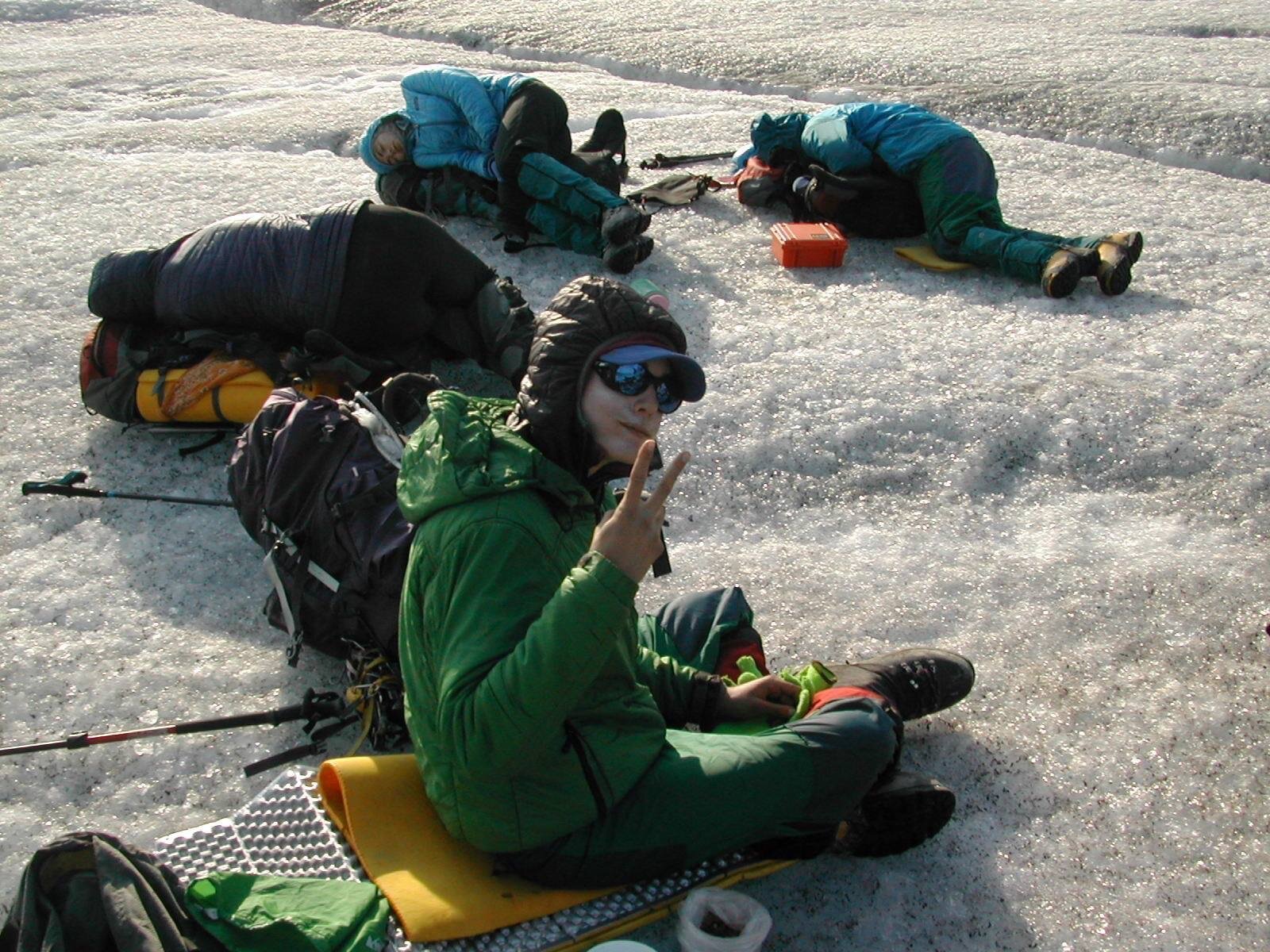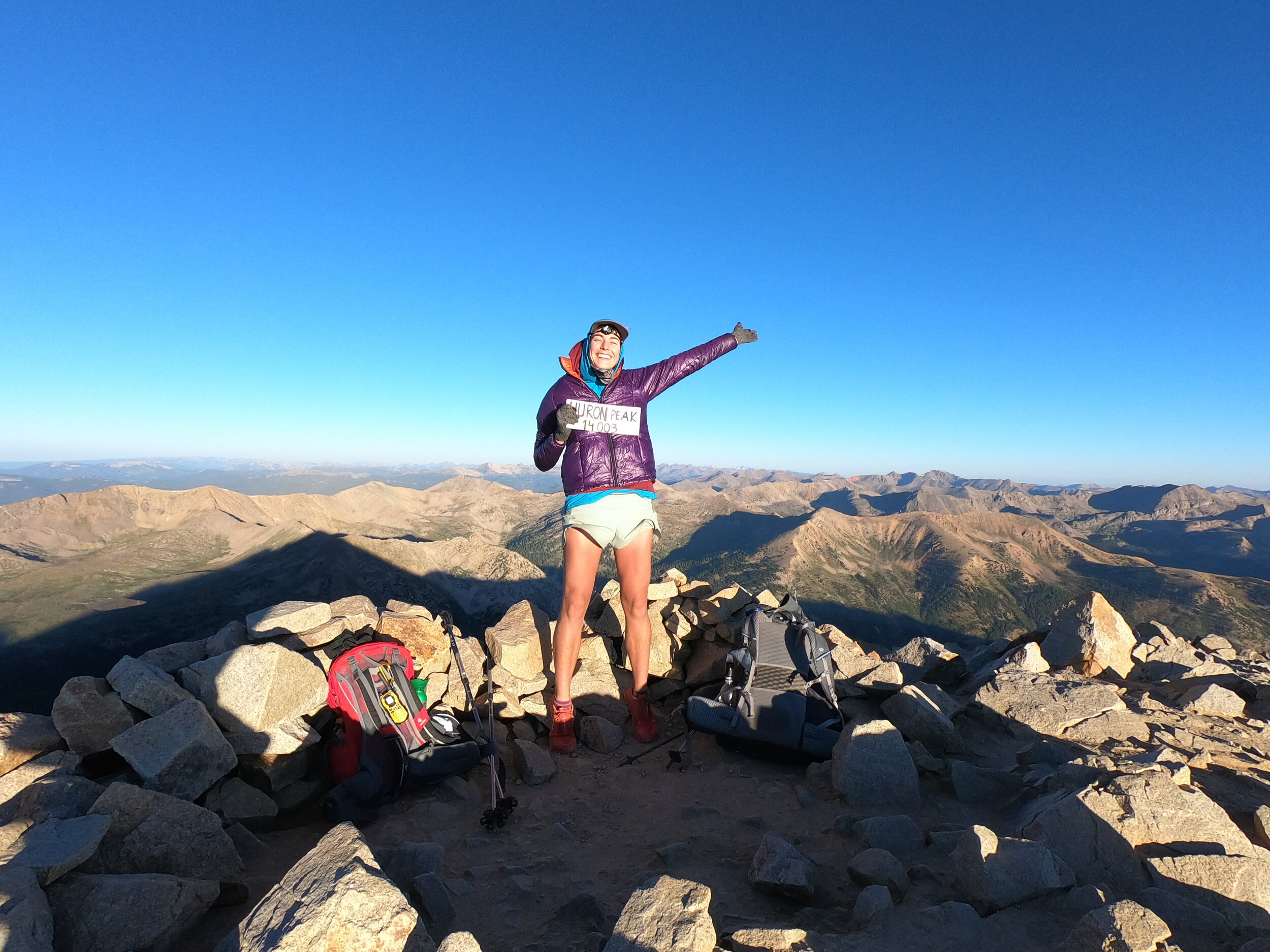Backpacking Layering Systems
Bug proof and filthy by Resplendent Creek, British Columbia; 2019 A method to the madness.
On a multi-day hike I wear the same clothes everyday.
Here’s why:
It is impractical, heavy, and bulky to carry a new outfit for each day of walking.
No one around you cares if you “stink”, they probably stink too.
You will look super cool and recognizable if you wear the same blue sun-hoody everyday for 27 days.
My hiking uniform, Colorado Trail; 2020After nearly 5,000 miles of backpacking, I’ve developed a system for layering up in the cold, de-layering in the blistering heat, and protecting myself from rain, wind, hail, and snow.
I use the word “system” because my layers work together (like a team) to provide me with the protection I need to stay cool or warm, and shielded from the elements.
Arguably not my best look... Canada; 2019Another round of stunning ensembles... Fashion sense aside, here is what I know to be true about dressing for adventure:
Avoid cotton.
Please don’t bring cotton clothing items into the backcountry. Cotton does not dry efficiently, and wet or dry, it does not trap heat as effectively as synthetic or wool fabrics.
Denim is made from cotton, so please, leave your jeans at home.
Sun protection is paramount.
I love a good fishing shirt—preferably one with a hood. When it gets especially hot, I whip it off and dunk it in every creek I pass by; the quick drying fabric cools me down with the slightest breeze and the hood protects me from a serious burn.
Bras, underwear, liner shorts, long pants!? Keep it simple.
I hike in the same sports bra everyday; if you need to wear a supportive base layer top, I recommend keeping the same one for the entire trip. It can be washed (away from water sources) at the end of each day and hung out to dry over night, or dried with body heat. The ideal material for any supportive base layer top is quick drying, breathable, and comfortable (not too tight).
Underwear or shorts with a liner? Either. I do recommend washing whichever garment daily (again, away from water sources), and in the case of underwear, you could bring a second pair and alternate usage from day-to-day to ensure dryness.
If you prefer full leg coverage, choose a hiking pant that is quick drying, highly breathable, and that has some stretch.
Conserve body heat in the cold.
Your body generates its own heat and it is important to retain it in cold/wet environments. If you are working hard, you are sweating, and while it may feel great to strip all your layers off on the summit—STOP & let’s think about this:
Consider the conditions: maybe it’s snowing, misting, or brutally windy. Maybe it’s in the 40’s or 50’s and the sun is going down. Maybe you are about to start a long descent. In any of these situations it would be unwise to cool off quickly.
Be proactive: when you first begin to sweat, take a moment and pull off an excess layer, or simply slow your pace, allowing your body to sweat less.
Cool off slowly: when you stop working hard, you body temperature will drop naturally. Even if you aren’t cold when you reach the height of your climb, go ahead and layer-up.
If it is windy or raining, put a wind layer on (rain coat) over your insulating layer, this will help your puffy or mid weight do its job more efficiently.
Waterproof is mostly a myth.
Your rain coat is both a wind and water repellent layer. Gore-tex is the most reliable option when it comes to water repellency, though, not the lightest material.
No piece of gear is entirely water “proof”—except maybe a bear canister but you can’t wear one of those—seams leak, as do zippers, and rain rarely falls straight down in the mountains, so it’s getting to you, one way or another.
Your raincoat’s main job is to keep you WARM. The same concept applies to rain pants.
A mid-layer is just a fleece.
It took me a long time to figure this one out because thru-hikers speak in code and I didn’t want to seem uncool by just asking, “Hey! What’s a mid-layer?”.
A fleece could be a Melanzana, a Patagonia R1, something fancy from Arc’teryx, or literally any long-sleeved fleece pull-over.
A mid layer is an important part of any layering system, and also a cozy layer to sleep in.
A synthetic puffy is basically a backcountry wetsuit.
Synthetic filling will keep you warm even when compressed and soaking wet—unlike goose down. For drier environments, down is the warmer and (sometimes) lighter alternative, yes. But if you are just learning to manage your gear in the backcountry and/or you are traveling through a humid environment, a synthetic-fill puffy jacket is the way to go every time. It behaves like a wetsuit in a deluge AND it is more affordable than its down counterpart.
Your puffy should not be water “proof”, this is front-country technology and will reduce the breathability of your garment.
If you need to repel water while wearing your puffy, put on your raincoat.
Hat’s and gloves—small but mighty.
Hands, once they go numb they are very hard to warm back up, and we all know that we lose most of our body heat through our head.
Gloves & hats should be used as a prophylactic—if you are cold, you’ve already waited too long to do something about it—even in the summer I carry a thin pair of wool gloves and a lightweight beanie.
Feet. Take care of them.
I know, feet aren’t a layer, but socks are, so I’ll talk about both.
Merino wool socks—thin for summer, mid-weight for colder months—are a durable and naturally odor-resistant option to protect and cushion your feet.
Foot-care cannot be emphasized enough.
“Care for a hot-spot before it becomes a blister, “ priceless advice.
Despite their unassuming size, blisters can be totally debilitating; if you feel one coming on, it’s better to just stop in your tracks—stop the whole train if you have to—and tape it up.
Salt rash is often a challenge in the foot realm—it can appear on other parts of your body too—basically, salt crystals build up on your skin and cause chafing. The best way to avoid chafing is to keep your socks as clean and dry as possible, by rinsing the salt out of them daily (away from water sources) and allowing them to air out.
Sleep cozy.
I like to sleep in a pair of long underwear (on the bottom) and my mid-layer (on the top), with nothing underneath. It is important to let your body breath and be dry after a long day of sweating. If it is a hot night, I might sleep in my hiking clothes sans sports bra, or nothing at all.
She Treks provides you with a sleeping bag liner to use inside your quilt, so you can sleep however you like without direct skin-on-quilt contact.
Early morning summit = puffy + sun hoody, Colorado Trail; 2020 We’ve talked about sun-rain-wind-cold protection and what to sleep in, we’ve talked about taking care of our feet…
What’s left…
Colorful layers are my favorite! Colorado Trail; 2020Ounces and pounds!
When you are packing for your trip, the weight of your gear matters.
Not all gear is created equal.
To make matters simple, the two items of clothing that can make or break your pack weight are—drumroll, please—your puffy jacket and rain coat.
As a point of ultralight reference, Enlightened Equipment’s Torrid Jacket (a synthetic, hooded puffy) size medium weighs 7.75 oz, and the Visp rain coat weighs 5.4 oz.
Layer-bound on the NIF, Patagonia; 2020As you price crunch, bargain hunt, and begin to assemble your team of layers, I encourage you to also consider the weight of the gear you are choosing to carry with you into the backcountry…
Whatever gear you acquire, you need to take it for a spin outside, wear it all at once, layer with it, see how it works as a system.
Does your mid-layer fit under your puffy? And what about both of those together under your rain coat?
Can you still breath? Can you move?
Purchasing brand new, ultralight clothing for a backpacking trip is expensive; I recommend trying to find certain high ticket items used (Patagonia sells “worn wear”, or you can peruse eBay & facebook market place).
Even if you do not go backpacking again after your trip with She Treks, this clothing can be used for day hikes, other athletic endeavors, and any future adventure that takes you off the beaten path.







